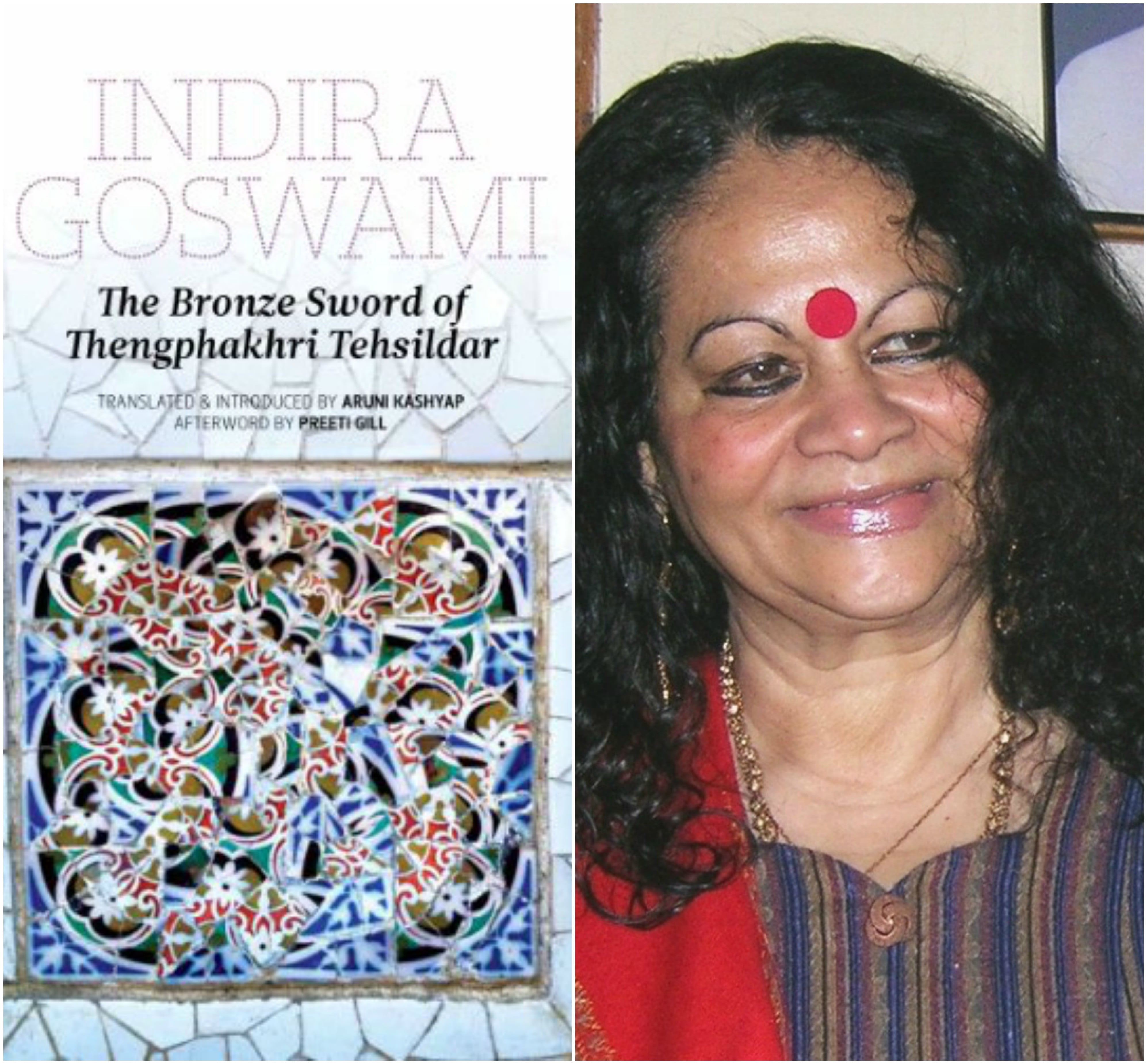How do we narrativize the history of freedom struggle? Who do we include and who we exclude? Which region, caste, gender and class gain dominance over the others? And how does the written word create a totalizing effect over oral sources?
These are the questions that continuously came to my mind while I was reading The Bronze Sword of Thengphakhri Tehsildar written by the celebrated author from Assam Indira Goswami, and published by Zubaan. It is a tale of a Bodo freedom fighter called Thengphakhri, arguably the first woman revenue collector, a tehsildar in British India, who she recreates from the oral tradition of folklore, songs and stories.
In an introduction by Aruni Kashyap who has translated this book, he writes:
“At a time when educated Indians, social reformers and the British government were trying to fight misogynist practices such as sati, child marriage and the purdah-system and encourage widow-remarriage, in Assam there was a woman working with the British officers shoulder to shoulder, as a tax collector who rode a horse, wore a hat and had knee-length black hair.”
Thengphakhri doesn’t speak much in the story, she is constructed as an introvert and her actions mostly speak for her.
The novel is a fictionalized biography of the legendary but forgotten figure of Thengphakhri. Her persona is a fascinating one for she is not only an empowered woman working abreast with British officers collecting taxes but also of one that transitions into a revolutionary fighter – who joins the underground national struggle and participates in the liberation of her own people.
She is a woman whose strength is unparallel. A colonized woman trained in horse riding and shooting. This is documented in the story when she kills a man-eating tiger just when it is about to attack. Her strength is emblematically portrayed when she finds a bronze sword amidst the ruins of a Devi Temple with which she goes out to participate in the anti-colonial struggle.
But what is rebellious and interesting about her that gives her real voice and agency is the powerful and transformative nature of her “silence”. She doesn’t speak much in the story, she is constructed as an introvert and her actions mostly speak for her. It is this idea of “active” and “contemplative” silence which gives her space to think and resist the colonial rule and hence participate in the larger struggle for independence.
Also Read: Chandraprabha Saikiani: Breaking Barriers In Women’s Education | #IndianWomenInHistory
It is this moment of silence when she reconnects with her true self –
“No, we don’t know what kind of abysses our heart stores inside.
We don’t know a lot about our own hearts. We are such fools, when we come to ourselves.”
What makes it possible for Thengphakhri to live such an unusual life is the society in which she lives, whose values are based on acceptance and equality. On becoming an Izardar, one of the villagers makes an important comment – “Our Thengpkhakhri! When young widows are burnt alive with their husbands by force and when they have to follow rules and regulations in all they do, in such times, our Thengphakhri is collecting taxes! Will be working and earning for her family! Bah! This is amazing, we should be proud of her!”
Since people from other places in the novel haven’t seen and heard of a woman galloping on a horse to collect taxes, they come from far off places in order to see and meet Thengphakhri. This leads men to question the violent treatment towards their fellow women – “She has the mother’s blessings! Here women are respected and look at us: our women are hidden behind the purdah. They can’t even leave their hair open like this, they can’t wear hats like this and when their husbands die – they are burnt alive in the cremation ground.”
Thengphakhri lives in a society whose values are based on acceptance and equality.
Someone from the crowd rises up and speaks “That’s why we have someone like Thengphakhri, who rides a horse side by side with the Britishers…Nobody dares to look at her! Her husband has been dead for years.”
The story is set in the Bijni kingdom of lower Assam, where Thengphakhri lived and worked until her death in 1879-1895 (disputed date). Bijni is an under-represented region in Assam’s history.
By recreating the history of this Bodo woman, Goswami is doing twofold work. One, of bridging the silences that exists in the history of Assam with regard to smaller kingdoms like Bijni, Dimoria, Tiwa, Kamata and Kachari by reconstructing historical memory in the consciousness of the present. Second, by re-narrativizing India’s freedom struggle by keeping Bodo life and its culture at the forefront of literary and cultural discourse.
Also Read: Aosenla’s Story: Traversing Through Self-Doubt And Power Dynamics
Featured Image Credit: Amazon and Wikipedia
About the author(s)
Deachen Angmo is currently an intern with FII.




